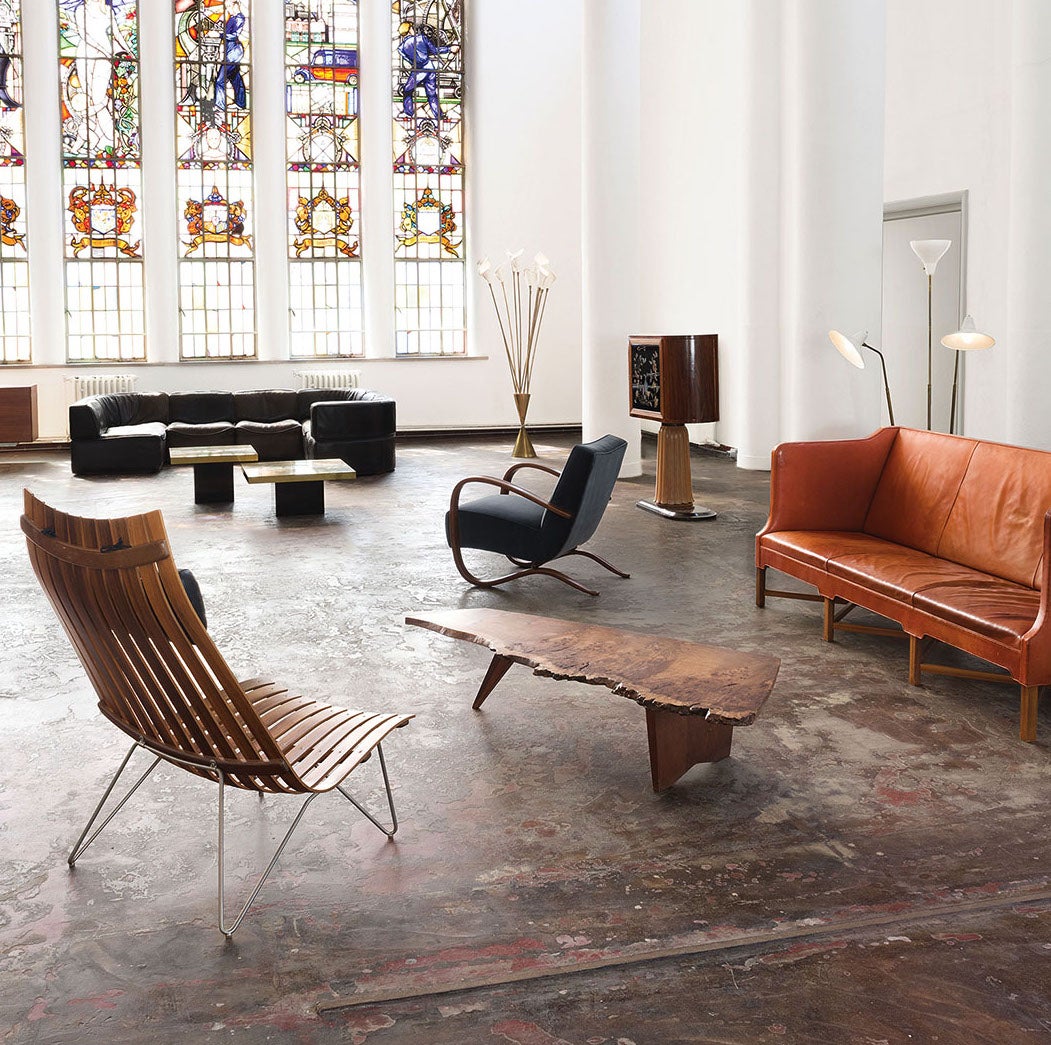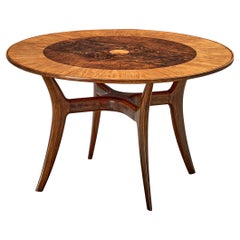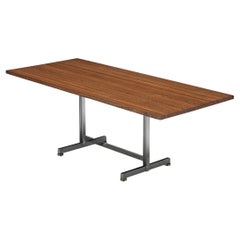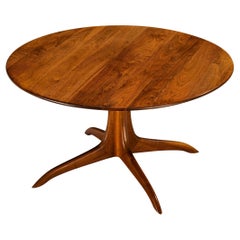Jules Wabbes Center Table with Tulip Base in Wengé and Bronze
About the Item
- Creator:Jules Wabbes (Designer)
- Dimensions:Height: 30.32 in (77 cm)Diameter: 63 in (160 cm)
- Style:Mid-Century Modern (Of the Period)
- Materials and Techniques:
- Place of Origin:
- Period:
- Date of Manufacture:1960s
- Condition:Wear consistent with age and use. Every item Morentz offers is checked by our team of 30 craftspeople in our in-house workshop. Special restoration or reupholstery requests can be done. Check ‘About the item’ or ask our design specialists for detailed information on the condition.
- Seller Location:Waalwijk, NL
- Reference Number:Seller: 501152101stDibs: LU933138761192

Established in 2006, Morentz has a team of approximately 55 restorers, upholsterers, interior advisers and art historians, making it a gallery, workshop and upholstery studio, all in one. Every day, a carefully selected array of 20th-century furniture arrives from all over the world at the firm’s warehouse, where the team thoroughly examines each piece to determine what, if any, work needs to be done. Whether that means new upholstery or a complete restoration, Morentz's aim is always to honor the designer’s intention while fulfilling the wishes of the client. The team is up to any challenge, from restoring a single piece to its original glory to furnishing a large-scale hotel project.
You May Also Like
Vintage 1970s Belgian Mid-Century Modern Coffee and Cocktail Tables
Metal
20th Century French Mid-Century Modern Dining Room Tables
Wood
Vintage 1950s Italian Mid-Century Modern Center Tables
Bronze
Vintage 1970s Danish Mid-Century Modern Dining Room Tables
Aluminum
Vintage 1950s Italian Mid-Century Modern Tables
Metal
Mid-20th Century Belgian Mid-Century Modern Dining Room Tables
Wenge
Vintage 1970s British Mid-Century Modern Dining Room Tables
Teak
21st Century and Contemporary Vietnamese Mid-Century Modern Dining Room ...
Wood
Vintage 1970s Danish Mid-Century Modern Dining Room Tables
Aluminum
Vintage 1960s French Mid-Century Modern Dining Room Tables
Bronze
More From This Seller
View AllVintage 1960s Belgian Mid-Century Modern Dining Room Tables
Metal
Vintage 1950s Italian Mid-Century Modern Tables
Wood, Walnut
Vintage 1960s Belgian Mid-Century Modern Tables
Steel, Chrome
Vintage 1970s American Mid-Century Modern Dining Room Tables
Walnut
Vintage 1940s European Mid-Century Modern Dining Room Tables
Metal, Brass
Vintage 1960s Italian Mid-Century Modern Dining Room Tables
Steel


